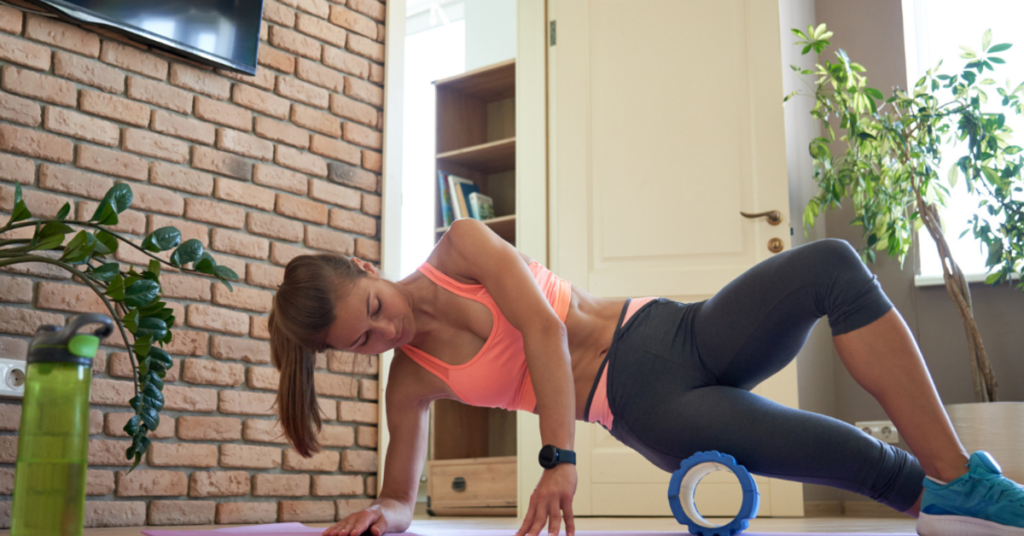You’ve pushed yourself to the limit, feeling every rep and embracing the burn. As you unlace your sneakers, the realization hits: the workout may be over, but the journey to recovery has just begun. Recovery is where the true transformation occurs, where muscles rebuild and strength amplifies. It’s not just about downtime; it’s about wielding a toolkit of techniques and tools. Dive in with us as we explore the top strategies to supercharge your post-workout recovery and set the stage for your next breakthrough.
Hydration and Nutrient Timing
Our bodies lose fluids and essential minerals during a workout, and replenishing these is crucial. Drinking water post-exercise not only hydrates but also helps in transporting nutrients to muscles, aiding in recovery. Moreover, there’s a golden window, typically 30 minutes to two hours after exercising, where your muscles are like sponges. Consuming a mix of carbohydrates and proteins in this period can speed up glycogen replenishment and muscle repair.
While some swear by the classic chocolate milk, others opt for recovery shakes or even simple fruit paired with a protein source. Listening to your body and choosing nutrient-rich foods is key. You’ll not only feel better, but you’ll also be ready to hit the gym with full force the next day.
Stretching and Mobility Work
Stretching isn’t just a pre-workout routine; it’s equally beneficial post-exercise. It helps in lengthening and relaxing the muscles, reducing the onset of stiffness. A post-workout stretch can improve flexibility, promote circulation, and alleviate muscle tension.
Adding mobility exercises to your routine can further enhance joint health. Movements like leg swings, arm circles, or foam rolling can ease tightness and improve range of motion. It’s like giving your body a gentle massage, signaling it to relax and recover.
Cold and Heat Therapy
The soothing chill of an ice pack and the gentle warmth of a heating pad both have their places in recovery. Cold therapy, or cryotherapy, reduces inflammation, numbs sore areas, and can significantly reduce recovery time. On the other hand, heat therapy increases blood flow and relaxes muscles.
Alternating between the two can be particularly effective. Known as contrast therapy, this method invigorates circulation and can be a game-changer in your recovery process.
Percussion Massage
Imagine a device that combines the knowledge of a sports masseuse with the convenience of at-home treatment. Enter percussion massagers. These handheld devices are designed to deliver rapid bursts of pressure into the muscle tissues, increasing blood flow and easing tension.
Percussion massagers are particularly beneficial for deep muscle recovery. With varying speeds and attachments, they can target specific muscle groups or broader areas, depending on the need. They’re a favorite among athletes for reducing soreness, increasing range of motion, and accelerating muscle recovery. Plus, the convenience factor is hard to beat.
Sleep and Rest
It’s an age-old recovery tool, yet often overlooked. Quality sleep is when the magic happens. During deep sleep cycles, our body releases growth hormones essential for muscle repair and rebuilding. Ensuring you get 7-9 hours of sleep can vastly improve recovery rates.
Coupled with active rest days—where you’re not necessarily idle but indulging in low-intensity activities—your body can recuperate more efficiently. Think of it as allowing your body to catch up and prepare for upcoming physical challenges.
Compression Gear
Donned by athletes around the globe, compression clothing isn’t just a fashion statement. These specially designed garments promote blood flow and reduce muscle soreness. By applying gentle pressure, they limit muscle oscillation and increase venous return, thus speeding up recovery.
Whether it’s socks, sleeves, or full leggings, incorporating them post-exercise can keep you feeling fresher and ready for the next workout. Plus, they’re comfortable enough to be worn for extended periods, maximizing their benefits.
Epsom Salt Baths
Submerging in a warm bath infused with Epsom salts is more than just a spa-like treat; it’s a recovery boon. The magnesium sulfate in Epsom salts can help relax muscles and loosen stiff joints. As you soak, the minerals are believed to be absorbed through the skin, helping in muscle function and reducing inflammation.
Besides the physical benefits, there’s also the mental relaxation. The warm water and tranquility provide a peaceful environment to relax, reflect, and recharge.
Active Recovery
Instead of complete rest, engaging in light activities can enhance recovery. Activities like walking, cycling, or even yoga increase circulation without putting undue stress on the muscles. They not only aid in physical recovery but also keep the mind engaged and active.
By varying the intensity of your workout days and incorporating active recovery sessions, you provide a holistic approach to fitness. It ensures the body is continuously adapting, growing, and recovering.
Conclusion
The journey to fitness is not just about the intensity of your workouts but also the smartness of your recovery. By integrating these tools and techniques into your post-workout routine, you not only speed up the recovery process but also enhance overall well-being. So the next time you conquer that grueling workout, remember recovery is where the real growth happens. Embrace it.






